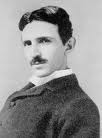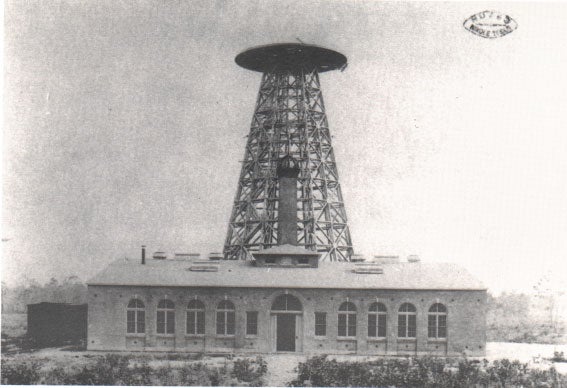The Genius and Scientific Discoveries of Nikola Tesla ~ hehe the "stuff" THis Man was working ON ! is howwwwwww longgggggg A~GO ! folks ! & "our gov." 2 THIS VERY DAY has his shit locked ...awayyyy ??? ...y folks ???

What
is the Tesla factor? It might be deemed a mixture of chance and
selflessness, that inventive genius which works towards broader,
holistic goals; a genius with the selflessness of a shaman and the
morality of an ascetic. Wherever one places Nikola Tesla in the canon
of scientific discovers and inventors, there is little doubt he comes
top of the tree, however vast that canopy tends to be.
Going through the small, though charming collection of items at the Nikola Tesla Museum in Belgrade,
one is struck by the man’s ascetic genius. It is all frugality and
dedication, a sort of priest of learning who also disseminates what
goods he has. The patents he took out, the discoveries he marketed, had
everything to do with the commonweal and virtually nothing to do with
his bank balance. It would come to cripple him later in life, a man who
died impecunious and alone in Room 3327 of the Hotel New Yorker, having
been injured in a hit and run.
His genius was one that was constantly
plagued by a stretch of chance and ill-luck. The museum features a
sample of the Tesla coils which could transmit and receive radio signals
at certain frequency, using electrical energy. But in 1895, chance
intervened with a fire that destroyed his work, which would have
featured the transmission of a signal 50 miles to West Point, New York.
The young Italian Guglielmo Marconi, who
is still thought my some to be the pioneering inventor of the effective
wireless radio system, took out the first wireless telegraphy patent in
1896. To transmit signals across the English Channel, however, he had
to make use of a Tesla oscillator.
The
issue of patents would prove to be a running battle, with Marconi
attempting to make inroads in the United States with applications that
were rejected over the course of repeated applications over three
years. “Many of the claims are not patentable over Tesla patent numbers
646,576 and 649,621,” came the coolly dismissive language of the US
Patent Office in 1903. Marconi had shown “pretended ignorance of the
nature of the ‘Tesla oscillator’” which could only be regarded as
“little short of absurd”.
Marconi was undeterred, and the Marconi
Wireless Telegraphy Company shot up in stock value. Investments poured
in from Andrew Carnegie. Thomas Edison also contributed. In 1904,
buoyed by additional backing from J. P. Morgan, Marconi tried again.
This time, the US Patent Office displayed a good deal of fickleness in
reneging on its initial hostility to Marconi, awarding him the patent
for the invention of radio.
To show that history has less reason
than weasel-like cunning, the Nobel Prize committee decided to jointly
award the prize in Physics to Marconi and Karl Braun in 1909. The
siding factor had been Marconi’s work in wireless communication.
That bout of scientific pugilism did not
end there. On June 21, 1943, months after Tesla’s death, the
historical record was, at least to some degree, corrected by the US
Supreme Court. The patent rights for Marconi were declared invalid and
awarded to Tesla. The Marconi Company had sued the US government for
using four patents in the US Court of Claims. The four tuned circuits
covered by Tesla’s patents were held to have preceded Marconi’s. The
inventor, John Stone, also gave Tesla priority.
The
battle over radio was but one aspect of Tesla’s at times maligned
work. An even more formidable prospect remained Thomas Edison, putative
inventor of the light bulb and phonograph. Edison was the consummate
pragmatist with good lashings of ruthlessness. He was brilliant but
threatened. Money did matter – he had, after all, established the first
investor owned entity in 1882.
Tesla,
in contrast, seemed the antic dreamer, and one who saw concepts as
structured totalities before pen and paper touched. He was the true
eidetic, reading Goethe’s Faust in Budapest and seeing before him the
electrical field. The brilliant Serb tended to operate in the world of
the unseen – rays, currents, electromagnetic fields.
The “current wars”, as they came to be
called, were bloody and toasty affairs. They featured Edison’s efforts
to, if one can pun on this, short-circuit Tesla by a direct attack on
the supposed evils of alternative current (AC). Try it, Edison
suggested, and die. Edison believed that direct current (DC) – his
envisaged world view of the electrical field – would dictate energy
consumption. Alternative current had to be discredited.
The
tried recipe involved inflicting death on chosen animals. He had
engaged on an orgy of electrical killings across a range of stray
animals: dogs, cats, cows, horses. Edison’s most famous casualty was
the much abused elephant Topsy, which he electrocuted on January 4, 1903
in Luna Park with an enthusiasm verging on the fanatical. Such
murderous enthusiasm stood him in good stead to be the technology wizard
behind the electric chair, the science of the grim reaper.
The
Belgrade museum does not linger over scientific fractiousness, though
it does introduce the theme. It rather chooses to see the oeuvre of
electricity as one vast family of ambitious inventors stretching back to
Thales. The Chicago Exposition saw Tesla’s thinking on alternative
current transformed into material worth. It convinced the science
heavies such as Lord Kelvin that AC was worth striving for. It also
paved the way for the Niagara Falls Power Project and Tesla’s polyphase
conductor.
Tesla’s vision would have terrified, as
it already did then, the fossil fuel burners and the plunderers of the
earth. It was an envisaged world of free, and for the most part
wireless electricity, transmitted via harnessing global points.
While he continued to investigate the
possibilities of such a vision, one virtually impossible without
colossal investment and good will, he was already noting humanity’s
insatiable appetite for energy. This is where the priestly side of
Tesla came in, the preacher for economic, prudent use.
His calls fell on the deafest of ears
and the heaviest of pockets. J. P. Morgan, Wall Street’s indispensable
representative, eventually ditched him. His laden pockets were also
doing the talking. Accounts abound that Morgan did so because Tesla was
not achieving his aims. The contrary point is more plausible: Tesla’s
success would have meant Morgan’s failure, an energy world without
money.
The
museum is filled with various models. The guide on this occasion
resembled a pimply Keanu Reeves, and his tall, lean figure mechanically
relayed the discoveries of Tesla and his various achievements. The
Columbus egg device is particularly striking for children and children
at heart. Christopher Columbus showed how he could make an egg stand –
by hard boiling it. Tesla showed how electromagnetic fields could
propel the fizzing egg upwards and move across the surface. These were
points of convergence four hundred years after the “discovery” of the
Americas, though it is fair to say that both men has vastly different
views about commerce and conquest.
Such museums tend to overcompensate in
the practical department, encouraging participants to engage with
certain exhibits. The truth is that, for such a figure, more should be
had. Tesla’s entire life has become fragmented, and scattered through
several museums with enthusiastic personnel who have persevered in
keeping his role as a preeminent scientific genius alive. The modern
Serbian state struggles with adoring its cultural and scientific heroes.
The sporting superstars tend to push the cerebral ones out, and into
distant corners – Novak Djokovic tends to come first in all the stakes.
For all that, the compact space offers
an intimate setting filled with a curious array of visitors. The Tesla
name continues to weigh heavily in the inventor’s world, though it
should be heavier. The crew today worshiping at his altar: fascinated
Russians, a few gawky Americans on missionary work, a gaggle of
intrigued Chinese, and an Aboriginal Australian jazz singer whose father
so happened to be Serb.
A
degree of chaos also prevails: tours for school students are also
arranged. Appointments are kept haphazardly. The lack of organisation
and punctuality is total in that regard. The staff seem disoriented and
frazzled by some guests who expect more, be it in terms of minutiae or
scientific gossip. There are misunderstandings as to when Serbian and
English sessions are to be held.
But the visitors, in the main, are
seduced by the electric charge of Tesla’s world. They come to sample
the classic shock devices – generators where audience members can
participate with fluorescent tubes to test the electromagnetic field.
Children squeal; adults sigh. And they ask for more. This was always
Tesla’s point: energy, to be sampled by all.

Dr. Binoy Kampmark was a Commonwealth Scholar at Selwyn College, Cambridge. He lectures at RMIT University, Melbourne. Email: bkampmark@gmail.com
The original source of this article is Global Research
Copyright © Binoy Kampmark, Global Research, 2015



No comments:
Post a Comment